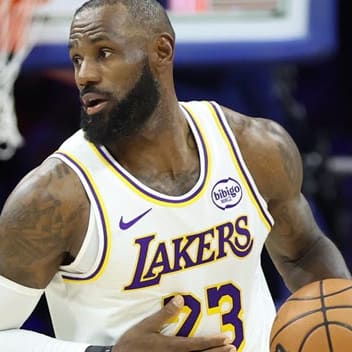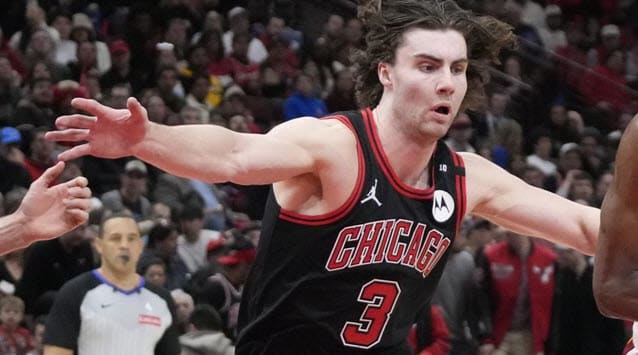It's only six games at most, but every year we see the NCAA Tournament have a profound impact on NBA draft stock. You don't have to look any further than the past two UConn titles to realize that.
Around this time two years ago, Connecticut had just finished 9-9 in the Big East (RIP) and while the Huskies were hardly on the bubble to get into the tournament, they weren't projected to be a particularly high seed. But then Kemba Walker decided he wasn't going to have any of that.
Walker was already having a tremendous year (he finished second in National Player of the Year voting behind Jimmer Fredette), but it was his five-game run in the Big East Tournament (RIP) that made him a household name for casual college basketball fans around the country. Six wins later Walker helped cap off an 11-game winning streak that propelled the Huskies to their first National Championship in seven years. And Walker was behind all of that.
So when draft time rolled around in June, we didn't hear much about Kemba's diminutive stature or his relatively mundane shooting percentages. All anyone talked about was his heart, his toughness, his drive. Those were the code words for Walker that year. So when the Bronx native made his way into the lottery (selected 9th overall by the Bobcats), it made sense. The NCAA Tournament narrative carried over. Even from a drafting perspective, these six games are the most important six of the
It's only six games at most, but every year we see the NCAA Tournament have a profound impact on NBA draft stock. You don't have to look any further than the past two UConn titles to realize that.
Around this time two years ago, Connecticut had just finished 9-9 in the Big East (RIP) and while the Huskies were hardly on the bubble to get into the tournament, they weren't projected to be a particularly high seed. But then Kemba Walker decided he wasn't going to have any of that.
Walker was already having a tremendous year (he finished second in National Player of the Year voting behind Jimmer Fredette), but it was his five-game run in the Big East Tournament (RIP) that made him a household name for casual college basketball fans around the country. Six wins later Walker helped cap off an 11-game winning streak that propelled the Huskies to their first National Championship in seven years. And Walker was behind all of that.
So when draft time rolled around in June, we didn't hear much about Kemba's diminutive stature or his relatively mundane shooting percentages. All anyone talked about was his heart, his toughness, his drive. Those were the code words for Walker that year. So when the Bronx native made his way into the lottery (selected 9th overall by the Bobcats), it made sense. The NCAA Tournament narrative carried over. Even from a drafting perspective, these six games are the most important six of the year.
Ben Gordon knows that, too. Gordon was part of Connecticut's 2004 NCAA Tournament run. The face of that team was, of course, Emeka Okafor, who had a real chance at going first overall in that year's NBA Draft (Dwight Howard went first, Okafor second). But Gordon - not Okafor - was the player who took UConn to the next level come tourney time. Gordon led the entire tournament in scoring, posting 127 points over his six games and jumping up from a projected middle-to-late lottery spot to third overall. That's the magic the NCAA Tourney can bring.
Connecticut is a major program. It's the Big East (RIP). It wins national titles. But sometimes the smaller guys, the Steph Currys of the world, can work their way into the lottery by performing in March. Here are some of the guys to keep on eye on for this year's tournament:
Nate Wolters, South Dakota State - Is there a better first-round matchup for Wolters from a personal perspective? Getting to square off against Michigan's Trey Burke, the best point guard in the country and a National Player of the Year candidate, might be the best way for him to prove himself. Outplay Burke in that 4 vs. 13 game and everyone will take notice. The long, 6-foot-4 Wolters has a chance to do just that playing against a notably smaller guard.
Mike Muscala, Bucknell - The most alarming part about Muscala's game is seeing someone his size with his coordination. Muscala uses his 6-foot-11, 234-pound frame effectively, but he scores more on skill than anything else. He has a post game. He has a bit of a jumper. He's an excellent rebounder - which will probably translate better to the NBA than some of his other skills. If Bucknell can beat Butler in the round of 64 - which it has a chance to do - Muscala might be able to take the Bison on a mini run and when Butler goes down, people notice.
Kelly Olynyk, Gonzaga - Olynyk is the best player on a 1-seed and yet, so many people have no idea who he is. Part of that is that he plays for a non-power conference school on the West Coast. Part of it is that he never started to get real playing time until this year, his junior season. His critics say he isn't athletic enough to play effectively at the NBA level. I don't buy it. Olynyk can run the floor, jump, and get open well. His lateral quickness needs work on the defensive end, but that shouldn't make or break his draft stock. Essentially, he's been typecast because he looks like Mimi-Siku from the unmemorable Tim Allen classic, Jungle 2 Jungle. An NCAA Tournament run could help change those perceptions.
Fred Katz is an NBA and college basketball columnist for RotoWire. Find more of his work on ProBasketballDraft.com or on ESPN's TrueHoop Network at ClipperBlog.com and Knickerblogger.net. Follow him on Twitter at @FredKatz.







































